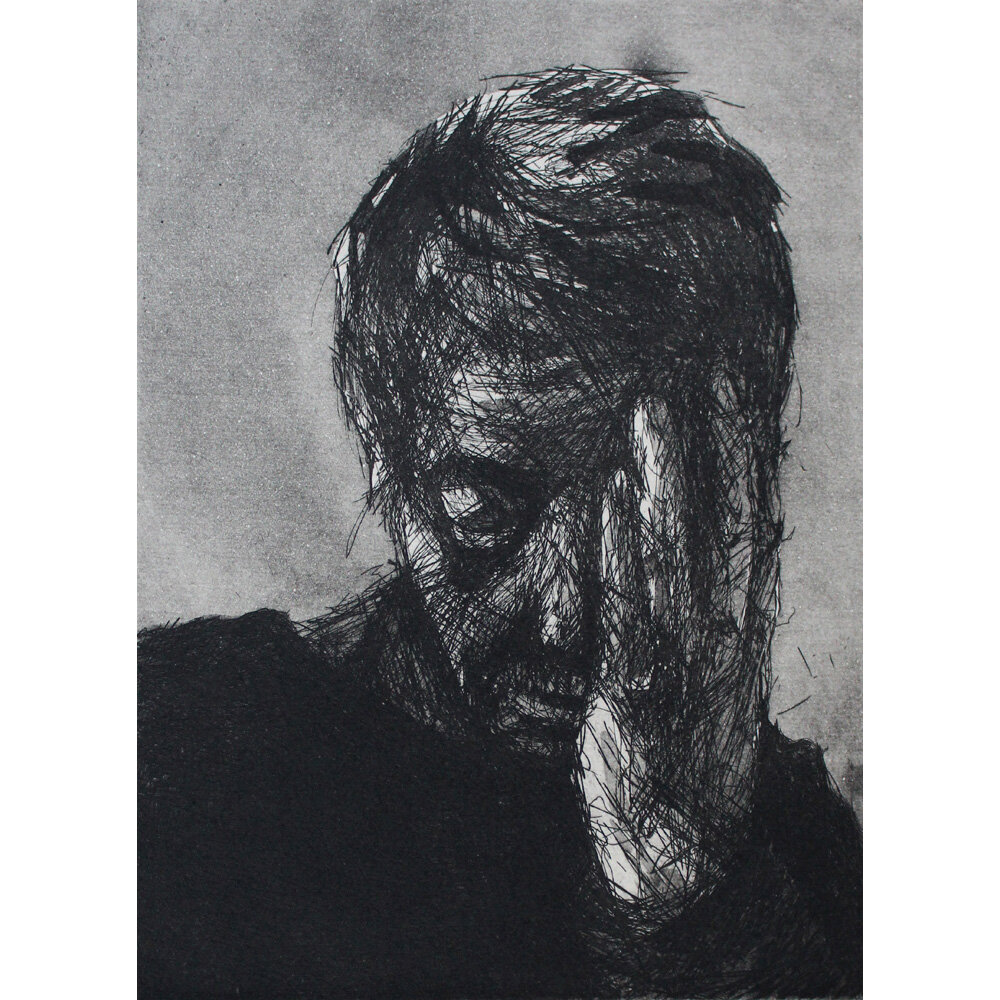Emily Ketteringham
£0.00
Small, intimate, portraits of place.
Emily has Aphantasia and finds it very hard to retain visual memories. Beautiful landscapes make a strong visual and emotional impact on her when present, but memories are lost as she walks away. A sense of space, fleeting impressions and hints of colour are recalled, but no firm images remain in her mind. To explore her Aphantasia, Emily starts by digitally manipulating a photograph (here, a Bluebell wood in Ilkley), reducing it to oversized pixels to build an image that has echoes of the original scene, but is obscured and difficult to read, like her memory. Emily works from low resolution phone photos, where colours are already slightly inaccurate. Halftone dots distort colours further, exaggerating some and eliminating others. This reflects how Emily’s limited memories degrade and change as she tried to hold onto them. The gold line refers to a shaft of sunlight catching the bark of a tree – an image she objectively remembers seeing, but has no visual recall of. The precision and accuracy inherent in her screenprinting process is in stark contrast to the loose and vague images of her memory.
Quantity:
Small, intimate, portraits of place.
Emily has Aphantasia and finds it very hard to retain visual memories. Beautiful landscapes make a strong visual and emotional impact on her when present, but memories are lost as she walks away. A sense of space, fleeting impressions and hints of colour are recalled, but no firm images remain in her mind. To explore her Aphantasia, Emily starts by digitally manipulating a photograph (here, a Bluebell wood in Ilkley), reducing it to oversized pixels to build an image that has echoes of the original scene, but is obscured and difficult to read, like her memory. Emily works from low resolution phone photos, where colours are already slightly inaccurate. Halftone dots distort colours further, exaggerating some and eliminating others. This reflects how Emily’s limited memories degrade and change as she tried to hold onto them. The gold line refers to a shaft of sunlight catching the bark of a tree – an image she objectively remembers seeing, but has no visual recall of. The precision and accuracy inherent in her screenprinting process is in stark contrast to the loose and vague images of her memory.
Small, intimate, portraits of place.
Emily has Aphantasia and finds it very hard to retain visual memories. Beautiful landscapes make a strong visual and emotional impact on her when present, but memories are lost as she walks away. A sense of space, fleeting impressions and hints of colour are recalled, but no firm images remain in her mind. To explore her Aphantasia, Emily starts by digitally manipulating a photograph (here, a Bluebell wood in Ilkley), reducing it to oversized pixels to build an image that has echoes of the original scene, but is obscured and difficult to read, like her memory. Emily works from low resolution phone photos, where colours are already slightly inaccurate. Halftone dots distort colours further, exaggerating some and eliminating others. This reflects how Emily’s limited memories degrade and change as she tried to hold onto them. The gold line refers to a shaft of sunlight catching the bark of a tree – an image she objectively remembers seeing, but has no visual recall of. The precision and accuracy inherent in her screenprinting process is in stark contrast to the loose and vague images of her memory.






